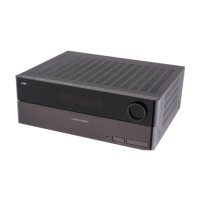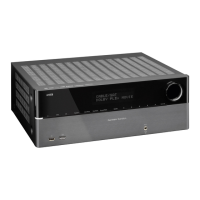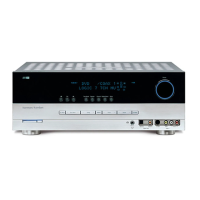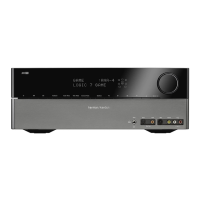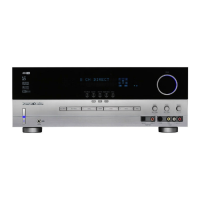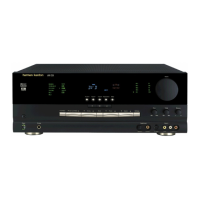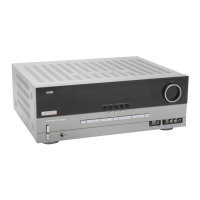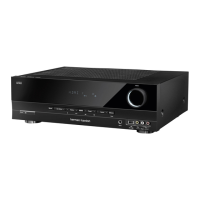OPERATION
MODE FEATURES
DTS Neo:6 Cinema
DTS Neo:6 Music
These two modes are available when any analog source is playing to create a six-channel surround presentation from conventional
Matrix-encoded and traditional Stereo sources. Select the Cinema version of Neo:6 when a program with any type of analog Matrix
surround encoding is present. Select the Music version of Neo:6 for optimal processing when a nonencoded, two-channel stereo
program is being played.
When selecting a DTS Neo:6 Cinema mode, a 3-, 5- or 6-channel configuration may be available, depending on the number of
speakers in your system. Use 3-channel mode when only a front left and right and a center speaker are present; surround-channel
information will be mixed into these speakers. The 6-channel mode will only be available if you have configured your surround back
speakers as active.
DTS 96/24 DTS 96/24 is a high-resolution format that uses a 96kHz sampling rate with 24 bits to produce extended information that improves
the harmonics of the source material. The AVR is capable of automatically detecting and decoding DTS 96/24 materials and delivering
them as the artist intended.
Dolby Virtual Speaker
Reference
Wide
Dolby Virtual Speaker technology uses a next-generation advanced algorithm to reproduce the dynamics and surround sound effects
of a precisely placed 5.1-channel speaker system using only front left and right speakers. In the Reference Mode, the apparent width
of the sound across the front image is defined by the distance between the two speakers. The Wide Mode provides a wider, more
spacious front image when the two speakers areclose together.
5-Channel Stereo
7-Channel Stereo
This mode takes advantage of multiple speakers to place a stereo signal at both the front and back of a room. Depending on whether
the AVR has been configured for either 5.1 or 6.1/7.1 operation, one of these modes, but not both, is available at any time. Ideal for
playing music in situations such as a party, this mode places the same signal at the front-left and surround-left, and at the front-right
and surround-right speakers. The center channel is fed a summed mono mix of the in-phase material of the left and right channels.
Dolby Headphone
DH
Dolby Headphone enables ordinary stereo headphones to portray the sound of a five-speaker surround-playback system.
